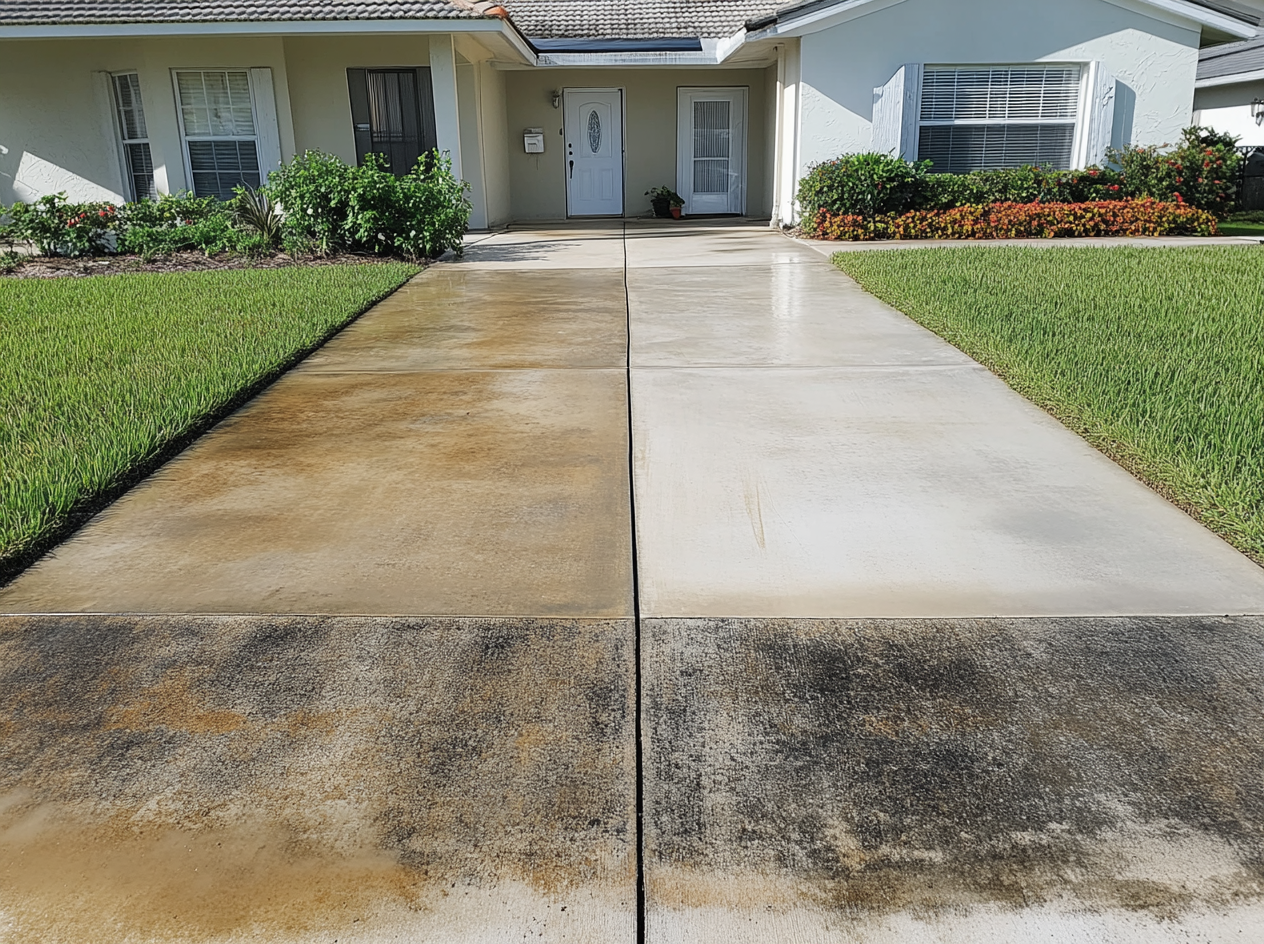Spring Cleaning with a Pressure Washer: What to Tackle First

Spring is the perfect time to freshen up your home and outdoor spaces. After a long winter, dirt, grime, and mildew can build up on driveways, siding, decks, and more. A pressure washer is one of the most efficient tools to tackle these cleaning tasks and restore your home’s exterior. In this guide, we’ll walk you through the best spring cleaning projects to take on with a pressure washer and the proper techniques to get the job done right.
1. Start with Your Driveway and Walkways
Your driveway and sidewalks endure heavy traffic throughout the year, collecting dirt, oil stains, and mildew. Cleaning them in the spring not only improves curb appeal but also extends their lifespan.
Steps to Pressure Wash a Driveway:
- Clear the area: Remove cars, bikes, and any debris.
- Pre-treat stains: Apply a degreaser or concrete cleaner for oil and grease spots.
- Select the right nozzle: A 25-degree nozzle is ideal for even coverage.
- Work in sections: Use steady, sweeping motions to prevent streaks.
- Rinse thoroughly: Allow the surface to dry before sealing if needed.
- Repeat if necessary: Stubborn stains may require additional passes.
2. Refresh Your Home’s Exterior
Over time, your home’s siding collects dust, mold, and mildew, which can make it look dull and unkempt. Pressure washing can bring it back to life without the need for repainting.
Pressure Washing Siding Safely:
- Choose a low-pressure setting: Avoid damage by keeping the PSI below 1,500.
- Apply a cleaning solution: Let it sit for 5-10 minutes to break down dirt.
- Spray from top to bottom: Prevent streaking and water damage.
- Avoid windows and vents: Use caution around delicate areas.
- Rinse completely: Ensure no detergent residue is left behind.
3. Clean Your Deck or Patio
Spring is the perfect time to prepare your deck or patio for outdoor gatherings. A pressure washer can strip away old dirt, mold, and grime, making your space look new again.
How to Pressure Wash a Deck:
- Use a lower PSI (500–1,200): Prevents wood damage.
- Apply a deck cleaner: Helps lift embedded grime.
- Use a wide spray nozzle: A 40-degree nozzle ensures even coverage.
- Keep a consistent distance: About 12 inches from the surface is ideal.
- Let it dry before staining or sealing: Allow at least 48 hours before applying any finishes.
- Inspect for damage: Look for splintering or loose boards before refinishing.
4. Brighten Up Your Fence
Winter weather can leave your fence looking dirty and aged. A good pressure washing session can help remove built-up grime and prepare it for staining or sealing.
Steps for Cleaning a Fence:
- Inspect the fence: Check for loose boards or nails before starting.
- Use a wide-angle nozzle: A 25-degree or 40-degree tip works best.
- Keep the wand moving: Prevent gouging the wood by maintaining steady motion.
- Rinse and let dry: Wait at least 24 hours before applying a stain or sealant.
- Seal for longevity: Applying a protective sealant can help extend the life of the fence.
5. Revitalize Outdoor Furniture
Patio furniture can accumulate dust, pollen, and mildew during the off-season. A pressure washer makes it easy to restore plastic, wood, and metal furniture.
How to Safely Clean Outdoor Furniture:
- Use a low-pressure setting: Avoid stripping paint or finishes.
- Apply a mild detergent: Helps break down tough stains.
- Rinse thoroughly: Ensure all soap is removed before drying.
- Let furniture dry completely: Prevents mold and mildew from forming.
- Cover or store properly: Protect furniture when not in use to maintain cleanliness.
6. Wash Your Roof and Gutters
Roofs and gutters often go neglected but can accumulate leaves, dirt, and algae. A pressure washer with the right attachment can help keep them in top shape.
Cleaning Tips for Roofs and Gutters:
- Use a soft-wash system: Too much pressure can damage shingles.
- Apply a roof cleaner: Kills moss and algae without harsh scrubbing.
- Use an extension wand: Keeps you safe by reducing the need for ladders.
- Flush gutters after cleaning: Ensures proper water drainage.
- Inspect for blockages: Check downspouts to ensure they are clear.
7. Tidy Up Your Garage and Outdoor Equipment
Spring is also a great time to clean your garage floor, tools, and outdoor equipment with a pressure washer.
What to Clean:
- Garage floor: Removes oil stains and tire marks.
- Lawnmowers and garden tools: Clears out dirt and grass buildup.
- Grills and outdoor kitchens: Cleans off grease and food residue.
- Bikes and sports equipment: Removes accumulated grime from winter storage.
- Trash bins: Sanitizes and deodorizes for a fresh start.
Safety Tips for Spring Pressure Washing
- Wear protective gear: Goggles, gloves, and closed-toe shoes are a must.
- Use the correct nozzle: Different surfaces require different spray angles.
- Test on a small area first: Avoid accidental damage by starting in a hidden spot.
- Be mindful of electrical components: Never spray directly at outlets, lights, or wiring.
- Check local water usage restrictions: Some areas regulate pressure washing due to conservation efforts.
- Keep children and pets away: Ensure safety during operation.
Spring cleaning with a pressure washer is one of the most effective ways to restore your home’s exterior, deck, driveway, and outdoor spaces. With the right equipment and techniques, you can achieve professional-level results on your own. At Benny’s Spray Center, we provide top-quality pressure washers, replacement parts, and expert advice to help you tackle your spring cleaning projects. Stop by today or visit our website to get the best tools for the job!